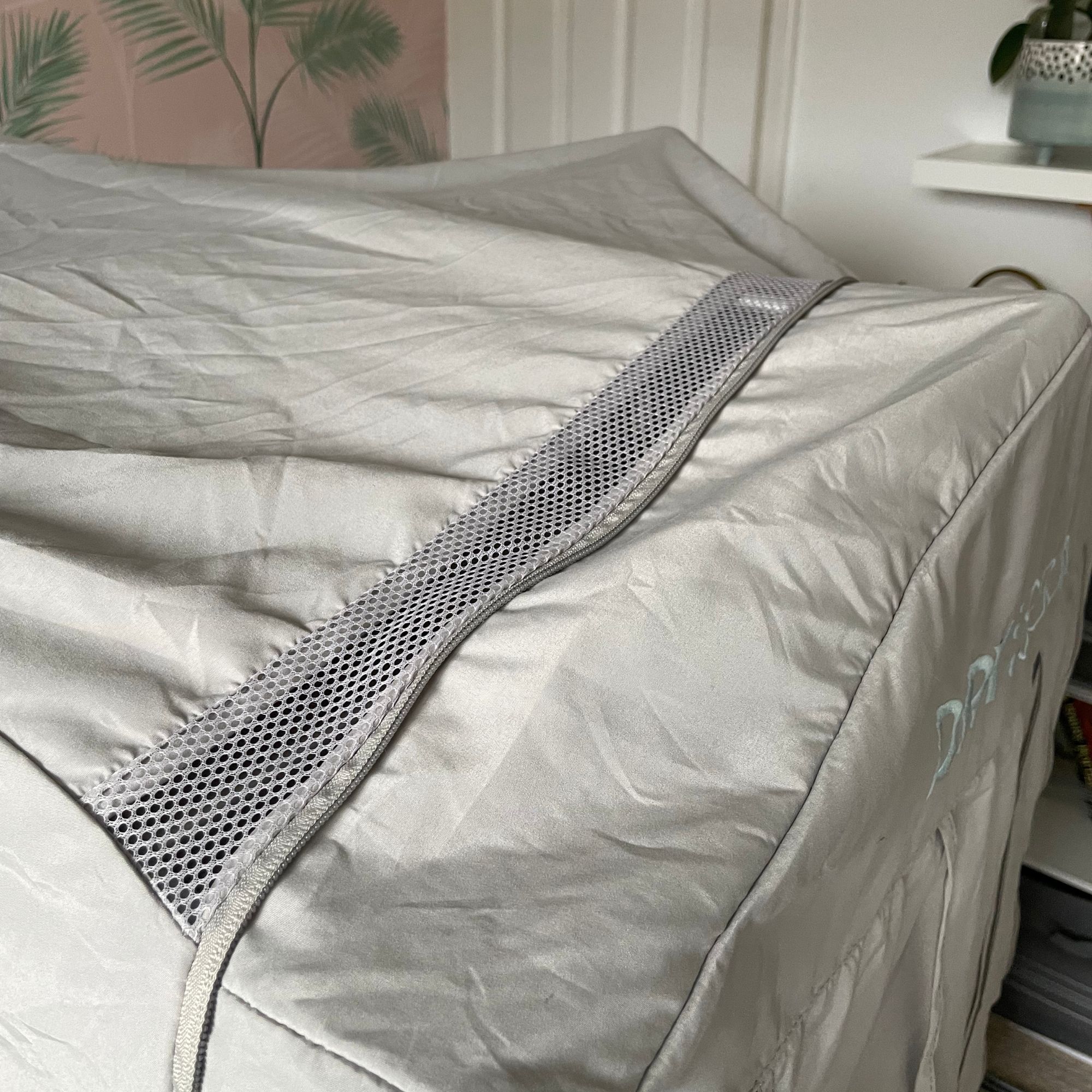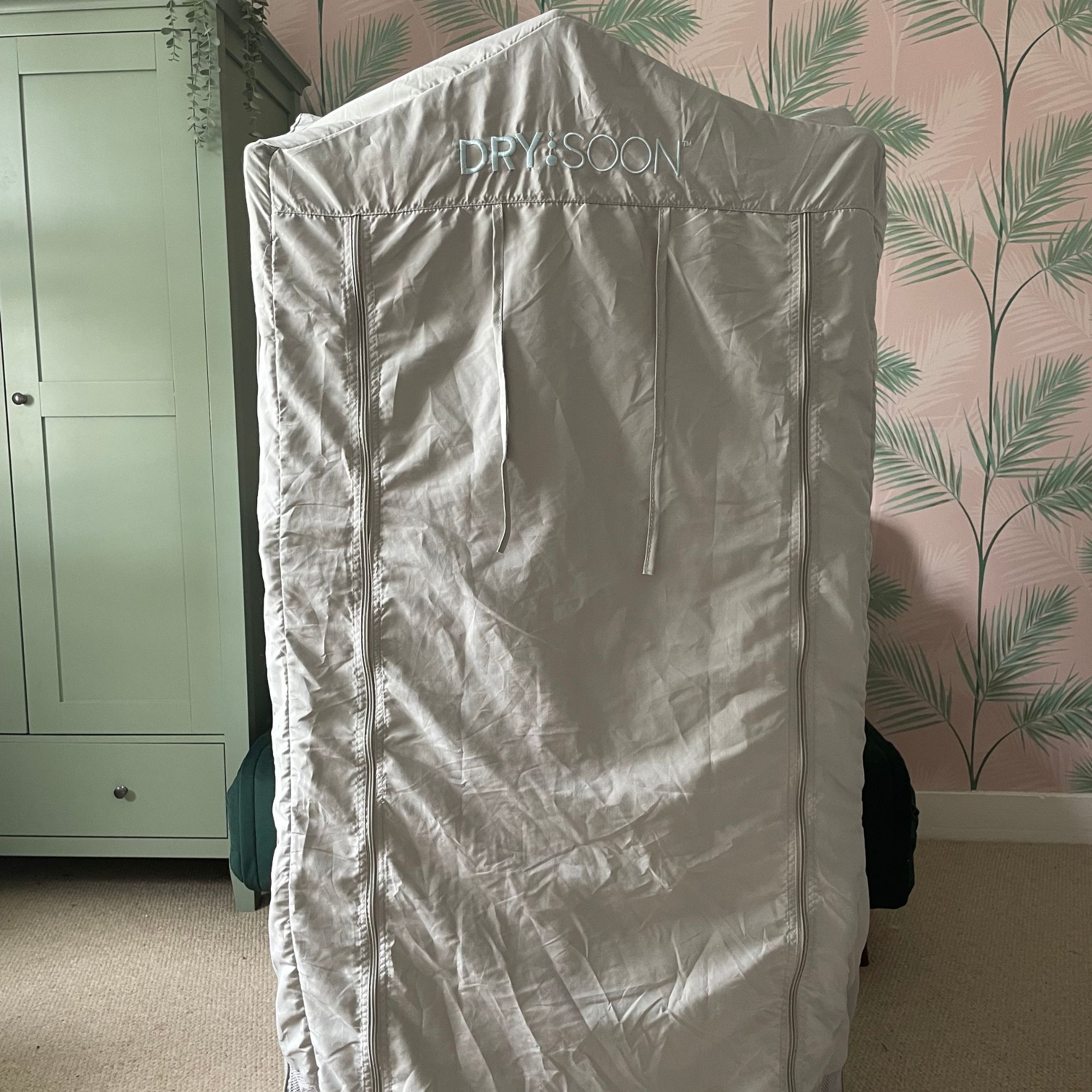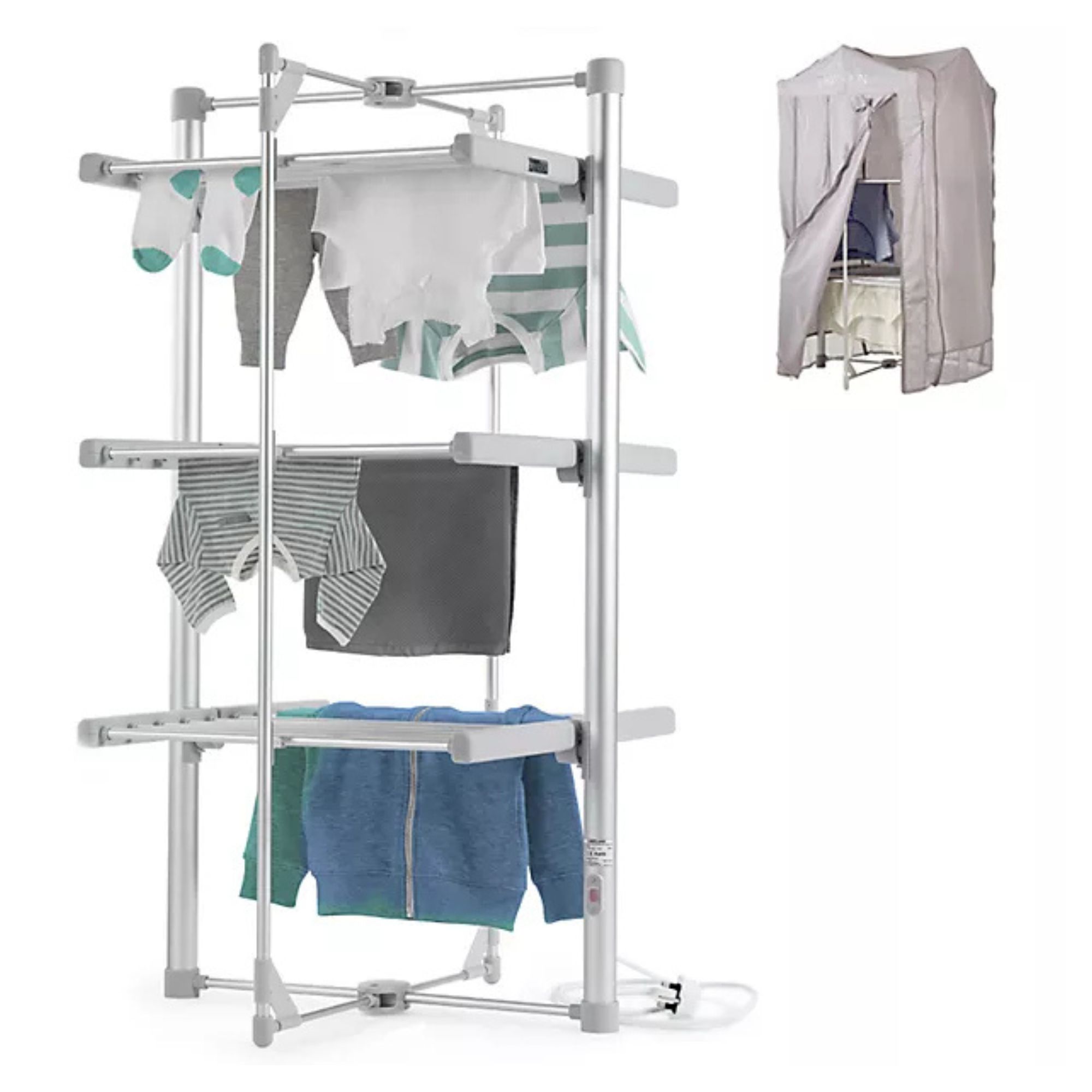Do you need a cover for your heated airer? It’ll definitely speed up drying - but only if you choose the right kind
To cover or not to cover… that is the question


Do you need a cover for your heated airer? It's a common question - and it’s totally valid. After all, it seems like it’s more of a handy addition rather than a necessity. But is that really the case?
At this time of year, when energy bills are higher, you can’t escape the buzz around the best heated clothes airers. Now that we can’t hang our washing out on the line, everyone is in the same boat of trying to dry clothes without a tumble dryer. But whether you’re still weighing up whether a heated airer is worth it (spoiler alert: It really is!), or you’ve recently bought a heated airer without a cover, you might be curious to know whether you need to buy this extra accessory or not.
That’s why we’ve consulted with experts and shared our own experiences with heated airer covers to help you decide whether you need a cover for your heated airer. But we think we already know what your answer will be…

Why you need a cover for your heated airer
We should preface this by saying that your heated airer will still work if you don’t have a cover. The rails will still heat up, and your clothes will still dry - but they’ll dry a lot slower, compared to a heated airer with a cover.
As Tommy Singh, Product Development Director at Beldray, explains, ‘Using a cover on your heated clothes airer can enhance its performance by trapping heat which reduces drying time.’
In fact, if you choose not to use a cover you run the risk of this hot air escaping into the room and away from your clothes. Then, only the areas of clothing in direct contact with the hot rails will dry quickly - unless you move them around regularly.
Tommy adds, ‘Covers help create a mini-drying environment, ensuring that the warmth from the airer is evenly distributed. This is particularly helpful in colder or more humid environments, where the air around the airer may not be as susceptible to fast drying.’
Sign up to our newsletter for style inspiration, real homes, project and garden advice and shopping know-how
So, not only does this mean that you’ll be able to dry your clothes fast in winter, but it also means that the cost to run a heated airer will be reduced as it won’t be on for as long.

But how much time does a heated airer cut off the drying time? Well, when Molly Cleary, Ideal Home’s Kitchen Appliances Editor, bought a basic heated airer without a cover, she found that her clothes would take a whole day to dry thoroughly.
When she tried the TikTok heated airer sheet hack (which bypasses the need for a specific heated airer cover for a double bedsheet), she found that it cut the drying time by half. And I can vouch for this with branded heated airer covers, too.
When I bought my Dry:Soon 3-Tiered Heated Airer, I opted for the bundle package that includes a cover (which actually made it cheaper than buying the airer and the cover separately). But I have used it both with and without a cover, and the difference was huge. While a load of washing took around 18 hours to dry without the cover, it took less than six to dry with the cover.
So it’s clear that the cover is the key to a dry load of laundry as quickly as possible - even if you don’t have a heated airer. For example, the Minky Sure Dri Heat Pod Drying System converts a regular drying rack into a quick-drying pod thanks to its zippable cover and fan motor that pumps hot air into the makeshift pod. Without that cover, it just wouldn’t work as effectively.
However a heated airer cover will only work its magic if you choose the right kind. So, there are certain details to take into consideration if you want to avoid any heated airer mistakes.
How to choose the correct cover for your heated airer
1. Ensure it has proper ventilation
There’s a reason why teaming a heated airer with a dehumidifier is the key to drying clothes, and that’s because a dehumidifier sucks up the moisture and circulates the air. However, this ventilation can be scuppered by the wrong heated airer cover, especially if you opt for the off-brand, universal type.
Dan Robson, Operations Manager at Hexo Electrical Testing, advises, ‘If using a cover indoors during the colder, rainy months, make sure there is adequate ventilation to prevent moisture buildup which may affect the airer’s circuitry. It will also reduce the buildup of any mould or mildew.’
Thankfully, the heated airer covers from reputable brands and manufacturers should be equipped with small perforated holes to make them breathable.

The top of a Dry:Soon heated airer showing the ventilation holes
2. Make sure it’s flame-resistant
Without a cover, your heated airer will heat your clothes at around 60℃. With a cover, it will create an environment that’s much warmer (typically around 70℃). Due to these high temperatures, you must ensure that your heated airer cover is safe to use in these conditions.
Dan says, ‘Ensure the cover is specifically designed for heated clothes airers and is made of a flame-resistant material.’ This is something to consider if you choose to try the TikTok sheet hack, too.
Although a sheet is proven to work, it might not be safe, so you should only use flame-resistant sheets to prevent any disasters. This is especially true if you plan on leaving your heated airer on overnight.
3. Always choose the right size
One of the best things about heated airers is that they come in many different sizes, which means that you can choose one that suits your home and drying habits perfectly. But if you opt for a cover to use with it, you need to make sure you choose the right size, as this can drastically affect the appliance's efficiency and even its safety.
‘The cover should fit snugly but not too tightly, as this can lead to overheating,’ Dan explains. Of course, it also shouldn't be too big, as this will allow the heat to escape.

4. If possible, buy a heated airer/cover bundle
Of course, you can buy a cover after buying your heated airer. But if you want to ensure that this appliance dries your clothes as effectively as possible and ticks all of the above boxes, you should ideally buy a heated airer that’s sold with a cover as standard.
This way, you know that it’s safe to use with the heated airer and you can benefit from more effective drying from the get-go.
FAQs
How do you use a heated airer cover?
It’s incredibly easy to use a heated airer cover. Simply load your heated airer up with your clothes, place the cover over the airer, and then fasten any zips to ensure no heat escapes. You can then turn the heated airer on.
Although you shouldn’t need to, you can check on your clothes every now and then. There’s no need to remove the cover entirely when doing this, though. Simply undo one of the zips and use this as an opening.
When you’ve finished using your heated airer and cover, fold it and store it until next time. In some cases, the cover may even double up as a storage bag for your heated airer cover.
Can you leave a heated airer on all the time?
Unless you plan on drying one load of washing after another, you should not need to leave a heated airer on all the time. You should only turn it on when it’s in use and turn it off as soon as your washing is dry.
However, modern heated airers are perfectly safe and should be ok if left on accidentally. Many even come with safety mechanisms built in to prevent any accidents. You can also use in-built timers with some heated airers so you never accidentally leave it on all the time.

Lauren Bradbury has been the Content Editor for the House Manual section since January 2025 but worked with the team as a freelancer for a year and a half before that. She graduated with a Bachelor’s degree in English and Creative Writing from the University of Chichester in 2016. Then, she dipped her toe into the world of content writing, primarily focusing on home content. After years of agency work, she decided to take the plunge and become a full-time freelancer for online publications, including Real Homes and Ideal Home, before taking on this permanent role. Now, she spends her days searching for the best decluttering and cleaning hacks and creating handy how-to guides for homeowners and renters alike, as well as testing vacuums as part of her role as the Ideal Home Certified Expert in Training on Vacuums, having spent over 110 hours testing different vacuum models to date!


